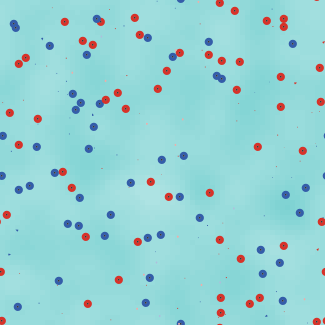any?
any? is used to determine if there are at least one agent within a given agentset. If there are, it will return true, otherwise it will return false.
For example, the following code would repeat running the go procedure on a repeated basis as long as there is at least 1 turtle in the model. If, let's say, there were many turtles but they could die, the model would stop when all the turtles die.
to go
if not any? turtles [
stop
]
tick
end
We can combine any? with a conditional reporter using the with primitive such as the following example that stops the model if any of the turtles in the model are smaller than 1 unit:
if any? turtles with [size < 1] [stop]
Things to keep in mind in mind when using any?:
- Don't forget the question mark (
?) at the end. - You can use the
notprimitive, like in the example above, to reverse the outcome ofany?. any?itself does not do anything; you should use it within a conditional statement such asifandif-elseor other primitives that require true-false values such aswhile.
The model example below represents the spread of a contagious disease within a healthy population. We use any? primitive to run the model as long as there is at least one healthy (green) individual in the model. Once all of the individuals turn red, the model automatically stops.
Try it Yourself
What's next?
Once you mastered the any? primitive, don't stop there. Check out the resources below to improve your NetLogo skills.
Published NetLogo models that use the any? primitive:
Similar primitives:
if
Carries out a provided set of rules (code) if a given condition is true. Does nothing if a given condition is false.



